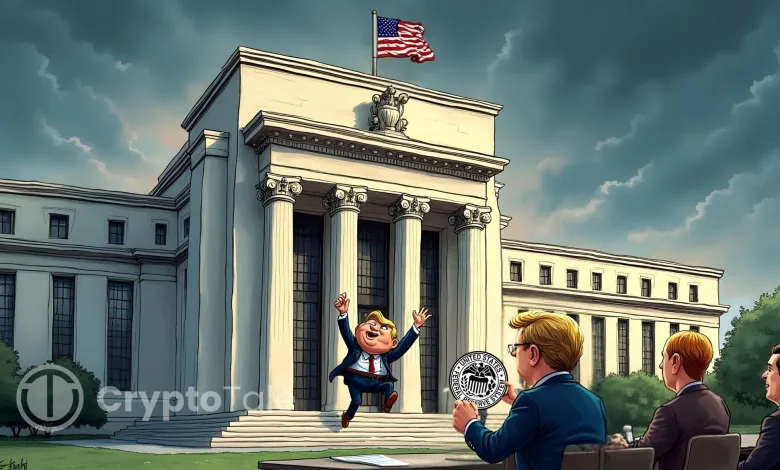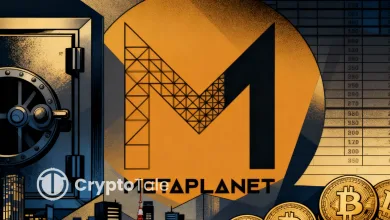Trump’s Attempts to Fire Fed Governor Sparks Authority Debate

- Trump’s attempt to fire Fed Governor Lisa Cook sparks legal resistance and market skepticism.
- Polymarket bettors give Powell only 10% removal odds, while Cook faces a 27% dismissal chance.
- Bitcoin barely reacted to Trump’s Fed fight, underscoring crypto’s focus on macro policy signals.
President Donald Trump escalated his confrontation with the Federal Reserve this week. His attempt to fire Governor Lisa Cook marks the first presidential dismissal of a Fed governor in the central bank’s history. The move intensified questions about the Fed’s independence. Yet, prediction markets show little belief that Trump will succeed in reshaping the central bank this year.
Polymarket data places the odds of Chair Jerome Powell being removed in 2025 at only 10%. Bettors also assign a 27% chance that Governor Cook will be ousted by December. Despite the dramatic headlines, investors see limited risk of leadership changes at the Federal Reserve before year-end.
Political Pressure Meets Market Skepticism
Trump has accused Cook of mortgage fraud and announced her dismissal in a letter shared on Truth Social. Cook rejected the claim, stating she cannot be removed without legal cause tied to her office duties and pledged to continue serving, backed by her attorneys, while the Justice Department investigates the allegations.
The President’s actions represent the sharpest challenge yet to the Fed’s structure. However, traders remain unconvinced that political theatrics will overcome legal constraints. Powell’s term runs until May 2026, and the central bank has long defended its authority against interference.
History shows that White House pressure on the Fed is not new. President Harry Truman pushed Chairman Thomas McCabe out in 1951 to secure wartime financing. Lyndon Johnson famously clashed with William McChesney Martin over rate hikes during the Vietnam War. Richard Nixon leaned on Arthur Burns in the 1970s, contributing to inflationary problems.
A 2013 study from the Cato Institute argued that Fed independence is more myth than reality. It documented how both parties have influenced monetary policy when politically convenient. Trump’s effort to remove Cook and threaten Powell follows that historical pattern, even if markets see little chance of immediate success.
Related: Bitcoin Slides Below $111K as Ethereum Gains Strength
Bitcoin’s Calm Response
Despite the unprecedented nature of Trump’s announcement, Bitcoin showed minimal movement. The largest cryptocurrency rose just 0.3% in the immediate aftermath. Broader trading has pushed it down 1.72% in the last 24 hours, according to CoinMarketCap data.
This muted reaction highlights how crypto markets are adapting to political headlines. Traders appear more focused on macroeconomic policy signals than direct political drama. Should Powell be removed, markets might view the move as the opening of the possibility of more rate cuts. A more lenient policy would push down the dollar and help boost risk assets, including Bitcoin.
At the same time, such an event would reinforce a narrative that fiat institutions are vulnerable to political capture. Bitcoin advocates often argue that the cryptocurrency is immune to these pressures, presenting itself as a neutral store of value. The availability of easier liquidity and the resurgence of the “hard money” appeal are the elements that could drive adoption.
Yet, the lack of price action around Cook’s dismissal attempt suggests skepticism. Investors apparently assume that the Fed will maintain continuity through legal and institutional protection. Bitcoin, at present, remains more tied to overall expectations of interest rates than political conflict between the Fed and the White House.
Markets continue to anticipate potential rate cuts before the end of 2025. Analysts argue that those expectations, rather than political disputes, will set the tone for digital assets. As the year progresses, traders monitor inflation data and policy signals more closely than the President’s attempts to test Fed independence.





